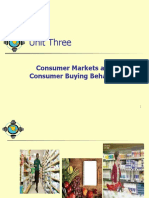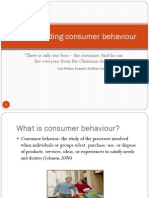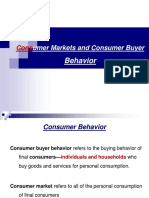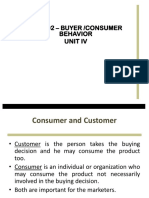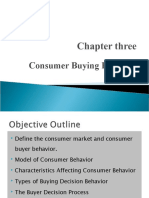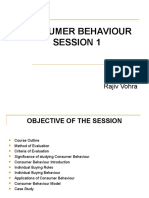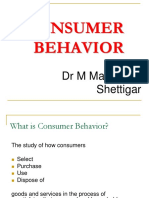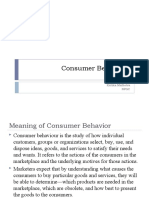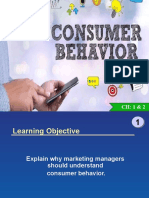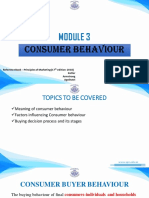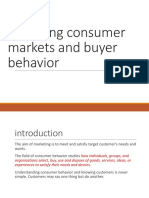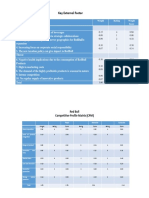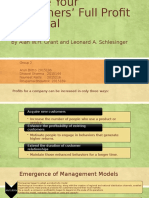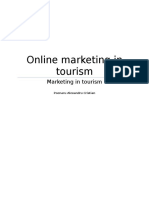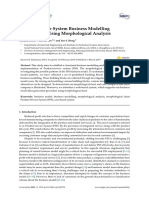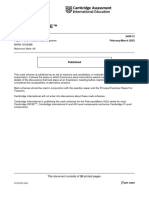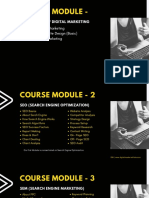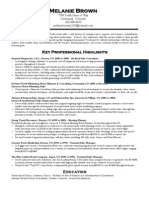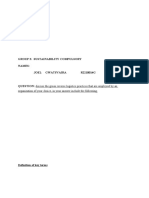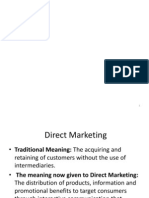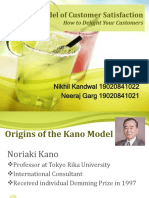0% found this document useful (0 votes)
144 views21 pagesDynamics of Consumer Behaviour Part I
This document provides an overview of consumer behavior topics covered in a lecture by Dr. Soma Sengupta including:
1. The meaning and nature of consumer behavior and the stages of the consumer buying decision process.
2. A model of consumer behavior called the stimulus-response model which shows how marketing stimuli enter a consumer's consciousness and influence their purchase decisions.
3. The importance of studying consumer behavior to satisfy customers, adapt to changes, and inform marketing strategies.
Uploaded by
Mahima YadavCopyright
© © All Rights Reserved
We take content rights seriously. If you suspect this is your content, claim it here.
Available Formats
Download as PDF, TXT or read online on Scribd
0% found this document useful (0 votes)
144 views21 pagesDynamics of Consumer Behaviour Part I
This document provides an overview of consumer behavior topics covered in a lecture by Dr. Soma Sengupta including:
1. The meaning and nature of consumer behavior and the stages of the consumer buying decision process.
2. A model of consumer behavior called the stimulus-response model which shows how marketing stimuli enter a consumer's consciousness and influence their purchase decisions.
3. The importance of studying consumer behavior to satisfy customers, adapt to changes, and inform marketing strategies.
Uploaded by
Mahima YadavCopyright
© © All Rights Reserved
We take content rights seriously. If you suspect this is your content, claim it here.
Available Formats
Download as PDF, TXT or read online on Scribd
/ 21














